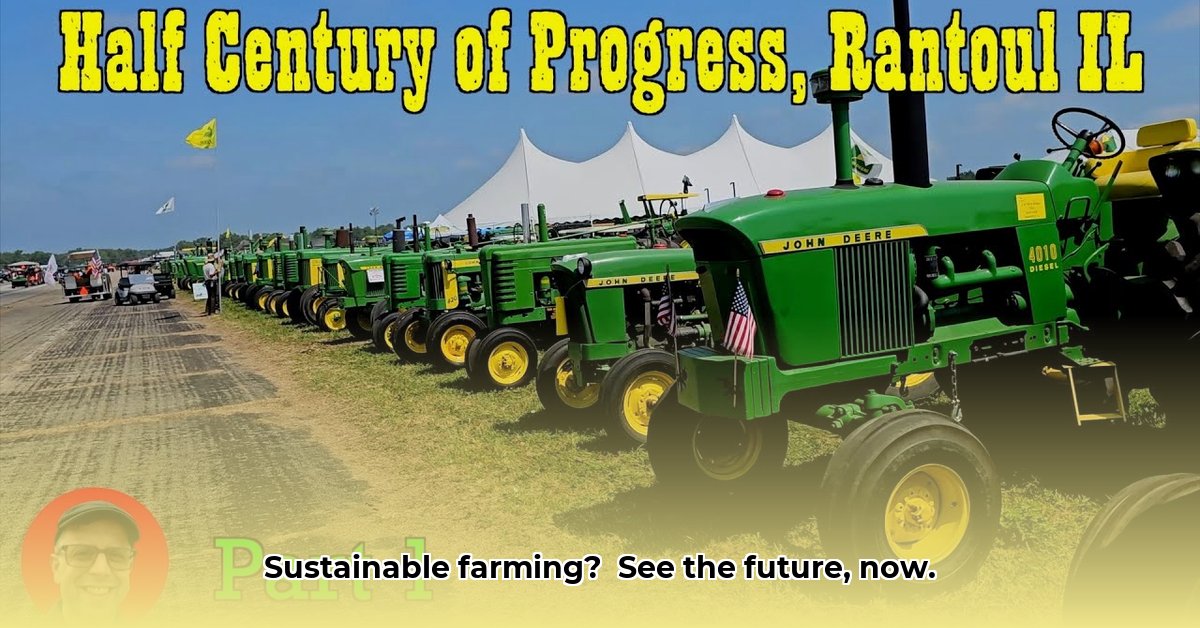
A Century of Progress: Then and Now
The Half Century of Progress show in Rantoul, Illinois, is more than just a display of tractors; it's a living testament to the evolution of American agriculture. Gleaming new farm equipment stands shoulder-to-shoulder with lovingly restored vintage tractors, each a chapter in a remarkable story of innovation and adaptation. This year's show powerfully underscored the critical need to blend historical wisdom with modern technology to create a truly sustainable agricultural future. The juxtaposition of past and present—Grandpa's trusty, hard-working machine next to a GPS-guided behemoth—serves as a compelling visual metaphor for the challenges and opportunities facing modern farming. But what can the past teach us about the future of sustainable agriculture? For more information on modern tractors, visit Case Tractor information.
Vintage versus Modern: A Sustainable Showdown?
The contrast between vintage and modern farming practices is striking. Older methods, often characterized by labor-intensive techniques like crop rotation (a method of rotating different crops in a field to improve soil health), emphasized working with nature. While these practices promoted soil health, they often resulted in lower yields. Modern agriculture, in contrast, utilizes GPS-guided tractors, precision planting, and sophisticated data analysis to maximize yields and efficiency. However, this high-tech approach frequently relies on increased fuel consumption and higher fertilizer applications, raising significant environmental concerns. How can we reconcile the efficiency of modern methods with the inherent sustainability of traditional practices? This is the central question that resonates throughout the show.
Sustainability in Action at the Rantoul, Illinois Tractor Show
The Rantoul show isn't just a static display; it’s a dynamic demonstration of sustainable agriculture in action. Farmers showcased techniques like no-till farming (minimizing soil disturbance to reduce erosion), cover cropping (planting secondary crops to improve soil health and prevent nutrient runoff), and precision agriculture (using technology for targeted fertilizer and pesticide application). These methods, while sometimes requiring greater upfront investment, can lead to significant long-term environmental benefits. However, one pressing issue highlighted at the show was the economic accessibility of these technologies. The high cost of precision agriculture equipment, for example, creates a significant barrier to entry for smaller farms. Can we ensure equitable access to sustainable agricultural practices for all farmers, regardless of scale?
Challenges and Opportunities for Sustainable Farming
The transition to sustainable agriculture faces numerous challenges. High upfront costs for new equipment and technologies represent a substantial financial hurdle for many farmers. Market volatility and fluctuating commodity prices also contribute to economic uncertainty, making the adoption of sustainable practices a risky proposition. Furthermore, a lack of access to training and educational resources can hinder the successful implementation of sustainable farming techniques. Government policies and financial incentives play a crucial role in overcoming these barriers. Subsidies for sustainable practices, investments in research and development, and access to affordable credit are just some of the policy adjustments that could encourage widespread adoption. How can we create a supportive policy environment that makes sustainable farming not only environmentally responsible, but also economically viable?
Looking Ahead: Integrating Past and Present
The Rantoul tractor show powerfully demonstrates that sustainable agriculture isn't an either/or proposition. It's not about choosing between vintage techniques and modern technology; it's about intelligently integrating the best aspects of both. The wisdom gleaned from generations of farming experience, combined with the precision and efficiency of modern innovations, creates a potent combination. The show underscored the urgent need for collaboration: farmers, scientists, policymakers, and consumers must work together to develop and implement sustainable agricultural practices that benefit both the environment and the economy. The future of sustainable farming requires a holistic approach that values both legacy knowledge and technological advancement.
Key Takeaways from the Rantoul, Illinois Tractor Show
- Blending Tradition and Technology: Sustainable agriculture requires a synergistic approach, combining the inherent sustainability of traditional farming practices with the efficiency of modern technology.
- Economic Viability is Crucial: Sustainable farming must be economically feasible for all farmers, requiring supportive policies and financial incentives to reduce the cost of entry.
- Collaboration is Key: A successful transition to sustainable agriculture demands collaboration between farmers, researchers, policymakers, and consumers to share knowledge and resources.
The Rantoul tractor show serves as a powerful reminder that the future of agriculture hinges on our ability to innovate while respecting the past. It’s a call to action, urging us to embrace a collective responsibility for building a more sustainable and equitable food system.